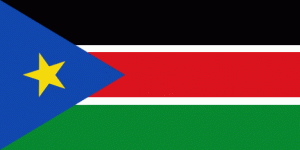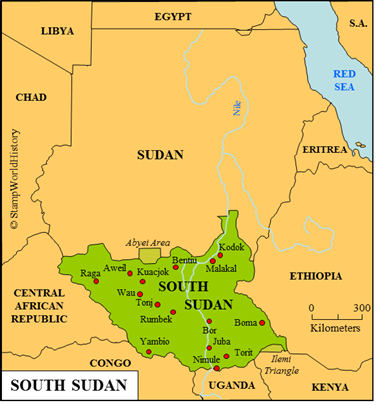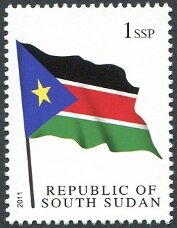
South Sudan
Quick reference
General issues: Republic 2011-Present
Country name on general issues: South Sudan
Currency: 1 Pound = 1oo Piaster 2011-Present
Population: No statistics available, 8 to 10 million estimates
Political history South Sudan
South Sudan is located in eastern Africa. The population consists mainly of a number of different Nilo-Saharan peoples of which the Dinka and the Nuer are the largest groups. The future South Sudan is, in the 1870’s, annexed by Egypt. Shortly after, in the 1880’s, Egyptian rule is ended by the Mahdi state – a short lived jihad state. The Mahdi state, in its turn, is defeated by the British in 1898, who establish the Anglo-Egyptian condominium of Sudan in 1899, encompassing both today’s Sudan and South Sudan. The Anglo-Egyptian condominium gains independence in 1956 as the republic of Sudan.
The republic of Sudan is, from independence, divided – the northern provinces where the population consists of Arabized Afro-Asiatic peoples adhering to Islam and the southern provinces where the Nilo-Saharan peoples having different cultures and beliefs. As early as 1954, factions in the south start a civil war – a war that often involves factions from neighboring countries also. The civil war will – with a pause between 1972 and 1983 – continue until an agreement is reached in 2005. The agreement provides for a 5 year period of autonomy to be followed by a referendum that is to decide about the future of South Sudan. The referendum is held in 2011 – South Sudan votes for independence which is effectuated when, in the same year, the republic of South Sudan is established. The respective governments are still in the process of defining some of the practical aspects of the separation, which proves to be a tense process that, upon occasion, has escalated into skirmishes between the armed forces of Sudan and South Sudan. A dispute, that has yet to be resolved, is the sovereignty over the Abyei Area – an additional referendum is one of the options on the table.
Politically, South Sudan has yet to achieve stability. A transitional constitution was signed in 2011 putting in place a governmental and judiciary structure. The first elections in independent South Sudan have yet to be held. The government is furthermore confronted with a range of armed rebel factions in different parts of the country.
Economically, South Sudan has seen little development due to the many years of civil war. The population is, for the largest part, employed in subsistence agriculture. South Sudan does have substantial natural resources: since the 1990’s the GDP is almost entirely generated by oil production.
Postal history South Sudan
The first stamps used in what is now South Sudan are the issues of the Anglo-Egyptian condominium of Sudan, these, from 1956, to be superseded by the issues of independent Sudan. During the years of civil war, postal services were severely disrupted. Currently, the government is in the process of rebuilding both domestic and international postal services.
South Sudan has issued its first stamps in 2011, commemorating independence. A set of three stamps was prepared – two of which were officially issued, the third stamp – showing design errors – was withdrawn. A second set was issued in 2012, commemorating the first anniversary of independence.
Album pages
← Previous page: South KasaiNext page: South West Africa →



